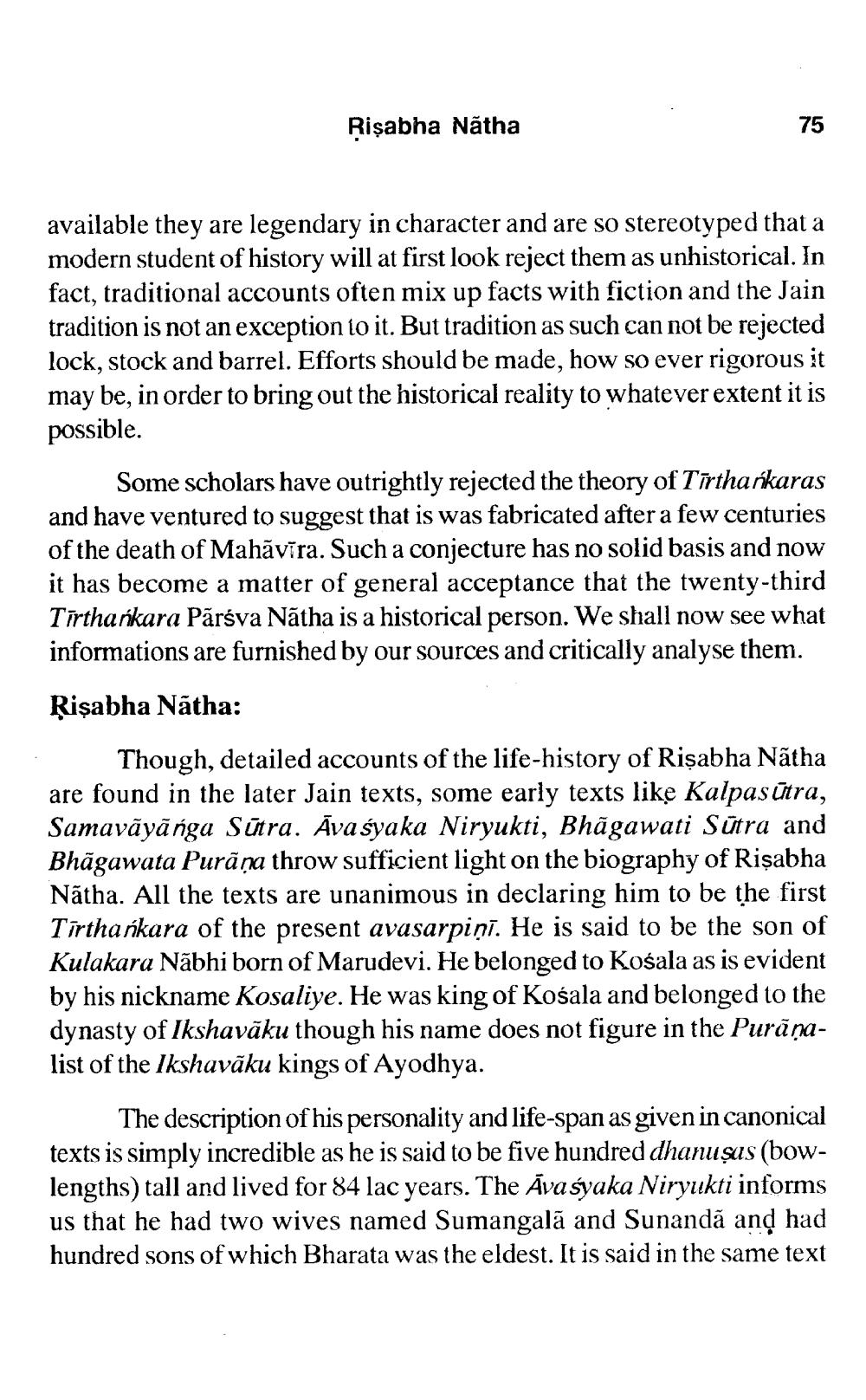________________
Rişabha Nãtha
75
available they are legendary in character and are so stereotyped that a modern student of history will at first look reject them as unhistorical. In fact, traditional accounts often mix up facts with fiction and the Jain tradition is not an exception to it. But tradition as such can not be rejected lock, stock and barrel. Efforts should be made, how so ever rigorous it may be, in order to bring out the historical reality to whatever extent it is possible.
Some scholars have outrightly rejected the theory of Tirtharkaras and have ventured to suggest that is was fabricated after a few centuries of the death of Mahāvīra. Such a conjecture has no solid basis and now it has become a matter of general acceptance that the twenty-third Tirtharkara Pãrśva Nátha is a historical person. We shall now see what informations are furnished by our sources and critically analyse them. Rişabha Nātha:
Though, detailed accounts of the life-history of Risabha Nãtha are found in the later Jain texts, some early texts like Kalpasūtra, Samavãyānga Sūtra. Avasyaka Niryukti, Bhāgawati Sūtra and Bhāgawata Purāņa throw sufficient light on the biography of Rişabha Nátha. All the texts are unanimous in declaring him to be the first Tirthańkara of the present avasarpiņi. He is said to be the son of Kulakara Nãbhi born of Marudevi. He belonged to Kośala as is evident by his nickname Kosaliye. He was king of Kośala and belonged to the dynasty of Ikshavāku though his name does not figure in the Purāņalist of the Ikshavāku kings of Ayodhya.
The description of his personality and life-span as given in canonical texts is simply incredible as he is said to be five hundred dhanusas (bowlengths) tall and lived for 84 lac years. The Ava syaka Niryukti informs us that he had two wives named Sumangalā and Sunandã and had hundred sons of which Bharata was the eldest. It is said in the same text




